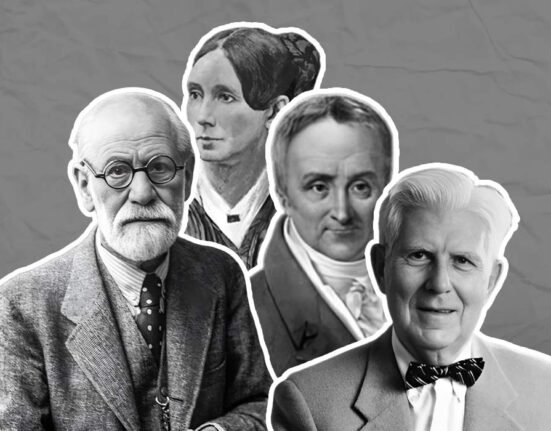Imagine this situation – You want to eat out, but you are faced with an important question – Where should I eat? Desi? Chinese? Fast food? Street food? You are clueless because you have a goal, but you don’t know how to reach it. This is what we call a problem. In other words, a problem is a state when there is a goal we would like to achieve but we are not clear about the processes we use to achieve the goal. This is where we use a certain mental process called problem-solving. Problem-solving is an aspect of cognition that attempts to systematically solve the problem.
Steps and stages in problem-solving
The very first step leading to problem-solving is to identify and recognize that there is a problem. Once we recognize that there is a problem, we then decide to tackle it. Following this, there are three stages in problem-solving – preparation, production and judgment.
1. Preparation
In this stage, we strive to understand the problems better. For this reason, we could ask questions, break down the problem into elements, and look at the problem from different perspectives. We also put them under specific categories. The categories of problems include:
- Well-defined problems: Situations where the nature of the problem is clear, and we have all the information needed to solve it.
- Ill-defined problems: Situations where the nature of the problem is unclear, and we don’t have all the information needed to solve it.
- Transformation problems: In this type of problem, we are required to transform the initial state into a goal state using certain methods.
- Problems of inducing structure: In this type of problem, we are required to identify existing relationships among the elements at hand and then create new relationships using them.
- Arrangement problems: In this type of problem, we are required to rearrange or recombine the elements at hand in a way that will fit a specific criterion. Examples include anagrams and jigsaw puzzles.
In addition to categorizing the problems at hand, another important aspect of problem-solving is how view explain the problem to ourselves and organize the information presented to us. For this, you could choose to represent it as necessary verbally, algebraically, or diagrammatically.
3. Production
At this stage, we strive to generate possible solutions to the problems. Simple problems require us to retrieve a solution from long-term memory. If we cannot retrieve a solution, we can still use the information from long-term and short-term memory and combine it to enlist possible solutions and use the trial-and-error method to find the best solution. Below, we provide some other strategies for arriving at possible solutions.
- Means-analysis: In this strategy, you start by using the previous method and then search for a means or procedure to achieve this subgoal. For example, imagine that you want to visit a friend in a nearby city. In this case, your current state is your home, and your goal state is your friend’s house. The difference here is the distance, time and direction between your current state and goal state. For this problem, potential solutions revolve around transportation options like bus, car, or train., and making the arrangements for the same.
- Difference-reduction method: In this strategy, we strive to reduce the difference between the initial state or current state of problem-solving and the goal state. For example, imagine you spilt coffee on your white shirt. In this case, your goal state would be to have a clean white shirt, and your current state is that you have a stained shirt. In this case, you can use the difference-reduction method wherein you focus on reducing the differences between your current state and your goal state.
- Working backwards: The strategy is to think backwards from the goal state towards the starting point while noting down all the steps in the process. For example, you are running late for an interview, and you want to get there on time. In this case, you can think backwards from the time of the interview and think of means to reach there on time.
- Restructuring: We saw that it is important also to observe how we present the problems to ourselves. Sometimes, we complicate seemingly simple problems by presenting ourselves in a complicated manner. This is where we need to restructure the way we represent the details of the problem.
- Algorithm: Algorithms refer to step-by-step strategies that are guaranteed to produce the needed outcome. This strategy is typically accurate but consumes time and resources. For example, if we compare scientific research, we could infer that the process is similar to an algorithm.
- Analogy: We could also use analogies to solve problems at hand. For example, when Archimedes was faced with the problem of finding the accurate weight of the king’s crown, it was his experience while bathing that led to the creative solution through buoyancy.
It is also important to look for obstacles during this process and work on eliminating them. Some obstacles involved in problem-solving include:
- Mental set: Mental set refers to our tendency to turn back to old patterns of problem-solving. For example, imagine you have a set of square wooden blocks that you need to arrange in a specific pattern. If you have solved similar puzzles earlier, it is more likely that you would use the same approach. However, if this problem is different from what you have practised, you are likely to be stuck using the previous approach to solve problems.
- Functional fixedness: This refers to our tendency to think of an object only in terms of its typical uses. For example, we are more likely to use spoons to eat our meals, instead of doing make-up.
Read More: Solving Jigsaw Puzzles is Good for Your Mental Health
3. Judgment
The final stage in the process of problem-solving is to evaluate the outcome. For this, we look at a variety of aspects such as costs, resources used, effectiveness of solution, utility, etc. In conclusion, problem-solving is a cognition including various steps and strategies to achieve certain goals. Problem-solving in real life requires us to be resourceful, flexible, open-minded and interactive to arrive at creative solutions, while also eliminating potential obstacles and biases.
References +
- Cherry, K. (2022, April 18). Overview of the problem-solving mental process. Verywellmind. https://www.verywellmind.com/what-is-problem-solving-2795485
- Cherry, K. (2023, January 3). Problem-solving strategies and obstacles. Verywellmind. https://www.verywellmind.com/problem-solving-2795008
- Feldman, R. S. (2011). Understanding psychology, 10th ed. McGraw Hill.
- Nolen-Hoeksema, S., Frederickson, B. L., Loftus, G. R. & Wagenaar, W. A. (2009). Atkinson & Hilgard’s Introduction to psychology, 15th ed. Wadsworth Cengage Learning.













Leave feedback about this